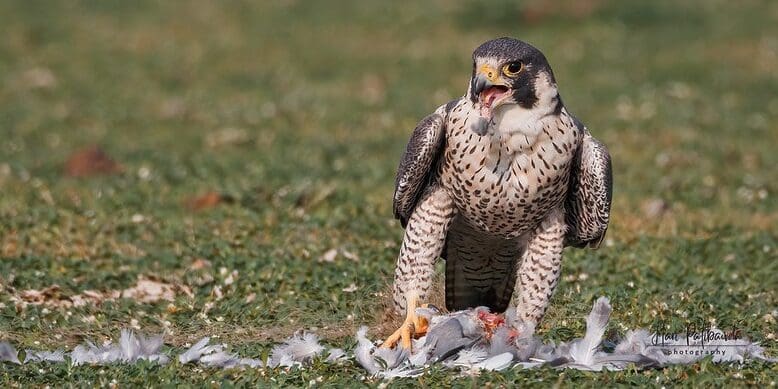Do we know what plants need?
Tim Pankhurst, East of England Conservation Manager at Plantlife, shares his thoughts on the need for evidence in plant conservation.

A few weeks ago, I met with colleagues from the Natural England-funded Aquatic Plants Taxon Group to thrash out ways forward for the conservation of a set of 75 aquatic and wetland plants, all red-listed (or Data Deficient, or Waiting List) in England. We discussed the state of play for each species with regard to taxonomy, population status, whether there was any work currently directed at them and what was known of success or failure rates; based on these discussions, we came to a view as to whether the Group should focus its attention on any species and, if so, to what end.
This reminded me of meetings I witnessed 40 years ago, when ‘experts’ would gather to agree the path ahead for a species, based on their ‘skill and judgement’, and knowledge of the species concerned. However, in this instance, we were leaning heavily on the massed records of the Botanical Society of Britain & Ireland database, including the astonishing resource that is Atlas 2020. Also, we were not deciding what conservation actions were needed but rather working out where the gaps in understanding were for each species and scoping the potential for funded activity to fill those gaps.
For instance, records of aquatics such as grass-wrack pondweed Potamogeton compressus (which is listed as Endangered in England [1]) are most often of floating fragments or turions which may be seen some kilometres from the plant that produced them, particularly if it grows in the canal system. A single, long-lived, rooted perennial plant may, over its life, generate thousands of such fragments, most of which will never root and develop into another long-lived individual. This means that routine botanical recording does not provide a reliable indication of the status of the species. In such a case, there is a need for a monitoring protocol that allows us to track the status of the plant more accurately and, if no one is doing that already, the group would look to develop such a protocol and seek to resource it.
This kind of evidence is essential for the development of a coherent plant conservation strategy; for a start, if one can establish that there are plenty of long-lived plants and their population is stable, then there may be no need for action. However, a measured decline can prompt an investigation into its causes and possible solutions. Such investigations led not only to the re-discovery of fen orchid Liparis loeselii subsp. loeselii (listed as Endangered) at two former locations but also to the application of site management that saw a 14-fold increase in the English population between 2012 and 2019 [2].

During our workshop, I had a powerful feeling that we should have been doing this 40 years ago, but of course we didn’t then have the internet or the incredible computing power that we have now. On this occasion, we were still using our ‘skill and judgement’ but they were applied to deciding whether or not there was enough data upon which to build conservation strategies and, if not, how we should acquire it. The activity was focussed heavily on the quality of the evidence available to us.
In my view, this recognition of the need for, and pursuit of, evidence to support our opinions is a relatively modern phenomenon, particularly with regard to plants; I have been what might loosely be termed a ‘professional’ plant conservationist for some 40 years and, in that time, I have encountered numerous instances where embedded conservation culture prevented much-needed research from going ahead, on the basis that ‘we know what plants need’. In fact, those very words have been spoken to me in the last 10 years. Unfortunately, it was then, as it is now, profoundly untrue. This culture is founded, I believe, on decades of conservationists telling ourselves that we could get by on theory and expert judgement, in the absence of funding for proper ecological investigations. This is potentially most damaging in relation to monitoring of management practice, as it has resulted in decades of management being applied to the best floral sites with very little record of a) what was done and b) what the consequences were for vegetation and plants of concern.
Plantlife, among other things, manages natures reserves and we have recently set about improving our standards; a large part of this involves, where practicable, gathering a comprehensive vegetation baseline for a reserve that is integrated with a monitoring protocol that effectively tracks the effects of our management and progress towards our goals. In 2023, we will be trialling this approach at our Seaton Meadows nature reserve in Leicestershire, where we manage a large area of mesotrophic grassland (MG4 Alopecurus pratensis – Sanguisorba officinalis grassland [3]) and want it to be as good as it can be.
Marsh marigolds at Seaton Meadows, Rutland. "Kingcups" held aloft against the dramatic backdrop of the Welland Viaduct #wildflowerhour pic.twitter.com/4oQ4vpG4cI
— Plantlife (@Love_plants) May 14, 2017
I am proud of the fact that Plantlife is tackling this issue head-on; we will probably always struggle to gather enough data to fully inform our practice but an acceptance of our shortcomings and increased effort applied to addressing the shortfall in data is a good start.
Plantlife is a Conservation Evidence Evidence Champion. Evidence Champions are organisations with a clear commitment to involve Conservation Evidence and other relevant sources of scientific evidence in their work.
References
[1] Stroh P.A., Leach S.J., August T.A., Walker K.J., Pearman D.P., Rumsey F.J., Harrower C.A., Fay M.F., Martin J.P., Pankhurst T.J., Preston C.D. & Taylor I. (2014) A Vascular Plant Red List for England. Botanical Society of Britain and Ireland, Bristol.
[2] Jacquemyn H., Pankhurst T., Jones P.S., Brys R. & Hutchings M.J. (2023) Biological Flora of Britain and Ireland: Liparis loeselii. Journal of Ecology, 111, 943–966.
[3] Rodwell, J.S. (ed.) (1992) British Plant Communities: Volume 3. Grasslands and Montane Communities. Cambridge University Press, Cambridge.



